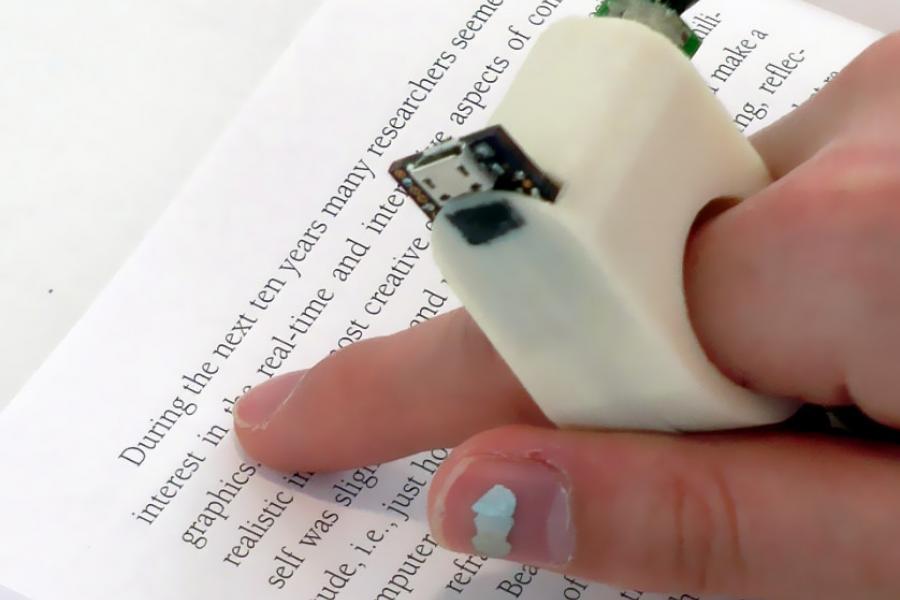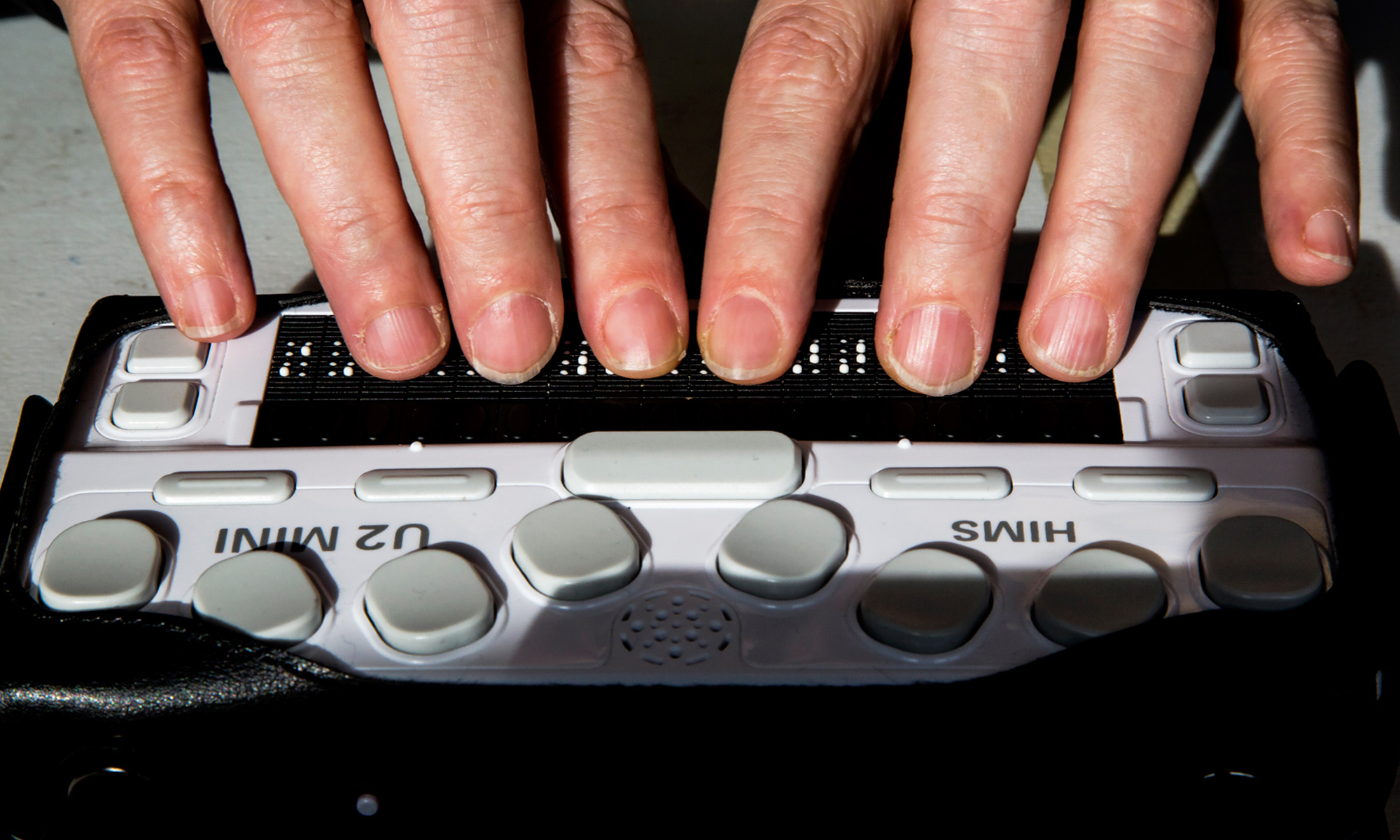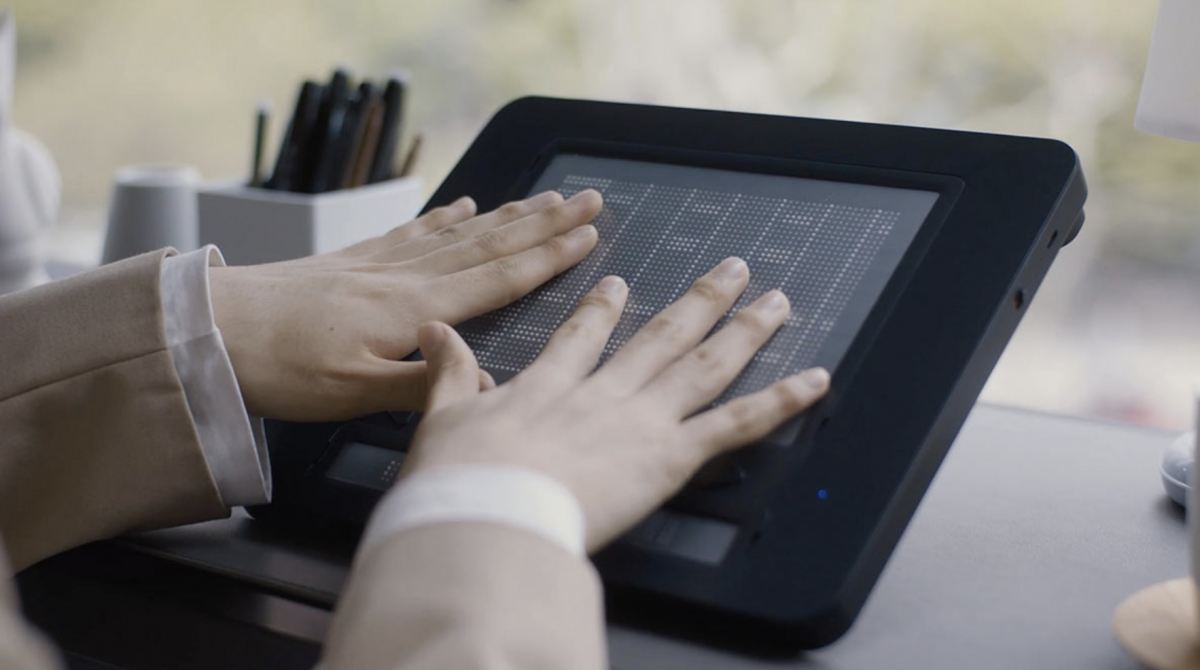Mobility Aids for Visually Impaired Users: Improving Freedom
Mobility Aids for Visually Impaired Users: Improving Freedom
Blog Article
Empowering Freedom With Assistive Innovation for the Blind
The combination of assistive technology right into the lives of people with aesthetic impairments stands for a considerable innovation in promoting independence and self-sufficiency. From ingenious screen readers to sophisticated clever walking sticks, these devices not just enhance everyday navigating and interaction however also encourage customers to engage meaningfully in various aspects of life. As we explore the myriad benefits and real-world applications of these modern technologies, it ends up being crucial to take a look at the underlying variables that add to their performance and the potential for future advancements in this vital field.
Overview of Assistive Modern Technology

The growth of assistive technology is based in concepts of inclusivity and empowerment. Developments in software, equipment, and sensory improvements offer users with choices customized to their certain needs. From display readers that convert text to speech, to responsive tools that communicate info via touch, these tools transform the way people engage with their surroundings.
In addition to functional applications, assistive technology promotes better social inclusion and involvement in different industries, consisting of education and learning and work (Screen readers for the blind). As study and advancement proceed to progress, the possibility for assistive modern technology to further improve the lives of visually impaired people stays encouraging, paving the method for a much more fair society where everyone can grow
Kinds of Assistive Tools
A variety of assistive devices have actually arised to sustain people with aesthetic impairments, each designed to meet specific needs and boost everyday performance. These tools vary from low-tech remedies to high-tech developments, supplying diverse choices for individuals.
Low-tech devices consist of magnifiers and large-print products that aid in reading and writing. Braille devices, such as Braille styluses and slates, allow tactile analysis and interaction. Positioning and mobility help, like white canes, aid customers navigate their atmosphere securely.
On the higher end of the spectrum, digital magnifying systems and display readers supply substantial support. Digital magnifiers allow individuals to increase the size of message and photos on displays, while screen visitors transform digital content right into synthesized speech, helping with accessibility to information on computers and smartphones.
Mobile phone applications likewise play a vital function, providing features like text acknowledgment and navigating support. Wearable innovation, such as wise glasses outfitted with augmented fact, is arising as an encouraging device to improve situational awareness.
Advantages of Assistive Modern Technology
The assimilation of assistive innovation dramatically improves the high quality of life for people with aesthetic disabilities. These modern technologies equip customers by promoting self-reliance, enabling them to browse their settings better and execute day-to-day tasks with greater convenience. As an example, screen viewers and magnification software application permit individuals to accessibility digital information, promoting academic and expert chances that might have formerly run out reach.
Furthermore, assistive devices such as smart walking sticks and general practitioners applications offer real-time navigating help, improving wheelchair and safety and security. This increased autonomy not just boosts self-confidence but additionally encourages social engagement, permitting individuals to participate even more completely in their neighborhoods.
Assistive technology additionally promotes interaction, helping customers link with others through voice recognition and text-to-speech applications. This capability is important for preserving partnerships and accessing essential info.
Furthermore, the personalization alternatives offered with many assistive technologies guarantee that users can customize gadgets to their particular needs, even more boosting functionality and effectiveness. On the whole, the advantages of assistive innovation for individuals with aesthetic problems are extensive, advertising a more comprehensive society where every person can pursue their objectives and goals.
Study and Success Stories
Highlighting the transformative impact of assistive modern technology, various situation research studies illustrate exactly how individuals with aesthetic problems have actually successfully integrated these devices right into their lives. One compelling instance includes an university student who utilized screen analysis review software program to browse scholastic products and online sources successfully. This innovation not just facilitated her education however likewise enhanced her confidence in joining discussions and group tasks.
One more study features a specialist that employs a smart device application made for navigation and item recognition. By utilizing this app, he has gained back autonomy in both his personal and workplace, enabling him to commute independently and engage with associates more successfully.
Furthermore, a retired person shared her experience with braille e-readers, which enabled her to access a large range of literature and stay gotten in touch with her area via publication clubs.
These success stories underscore the important duty of assistive modern technology in fostering freedom, enhancing quality of life, and promoting social integration for people with aesthetic problems (OCR devices for the blind). By welcoming these innovative devices, customers can overcome difficulties and confiscate opportunities that contribute to their individual and professional satisfaction

Future Trends in Assistive Innovation
Innovation in assistive innovation is poised vision check to redefine the landscape of support for individuals with visual disabilities. Arising fads stress the assimilation of artificial knowledge (AI) and maker learning, which enhance the performance of devices that assist with navigation and details availability. AI-driven applications are now qualified of translating visual information in real-time, enabling customers to engage with their setting more independently.
In addition, the development of wearable modern technology is advancing swiftly. Smart glasses geared up with enhanced truth (AR) can provide audio summaries of surroundings, changing exactly how individuals engage with public rooms. These gadgets not just promote autonomy but likewise foster social incorporation.
In Addition, the Internet of Points (IoT) is making homes smarter, permitting seamless connection between assistive devices and daily devices. This connection empowers users by making it possible for voice-activated controls and automatic actions customized to individual demands.
Final Thought
Finally, assistive technology plays a crucial function in equipping people with visual problems by enhancing their self-reliance and interaction with their surroundings. The varied range of applications and devices available not only helps with navigation and interaction but additionally advertises social integration and chances for individual and specialist growth. As innovations proceed in this field, the potential for enhancing the lifestyle for those with aesthetic impairments will increase, cultivating higher freedom and empowerment.

Report this page